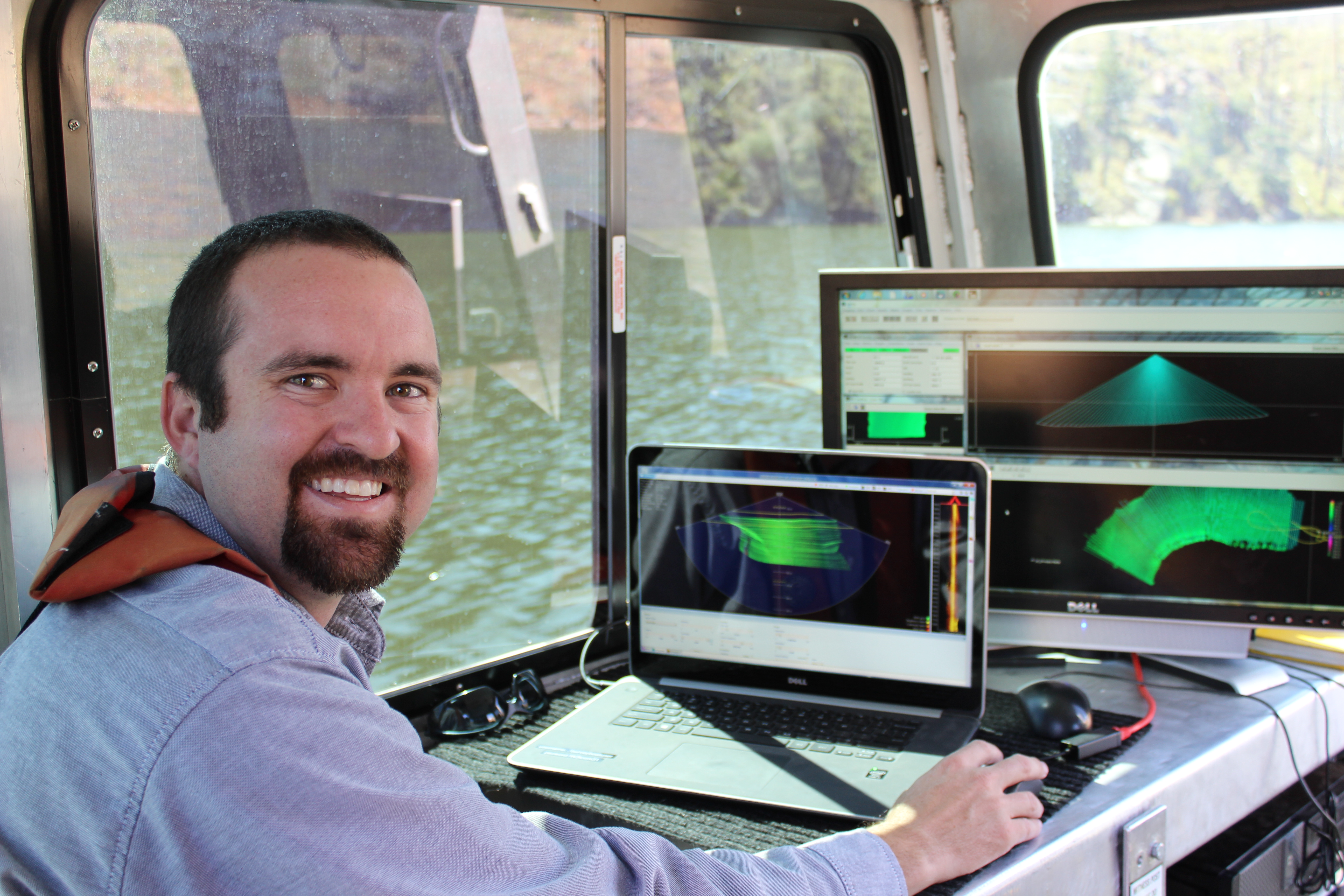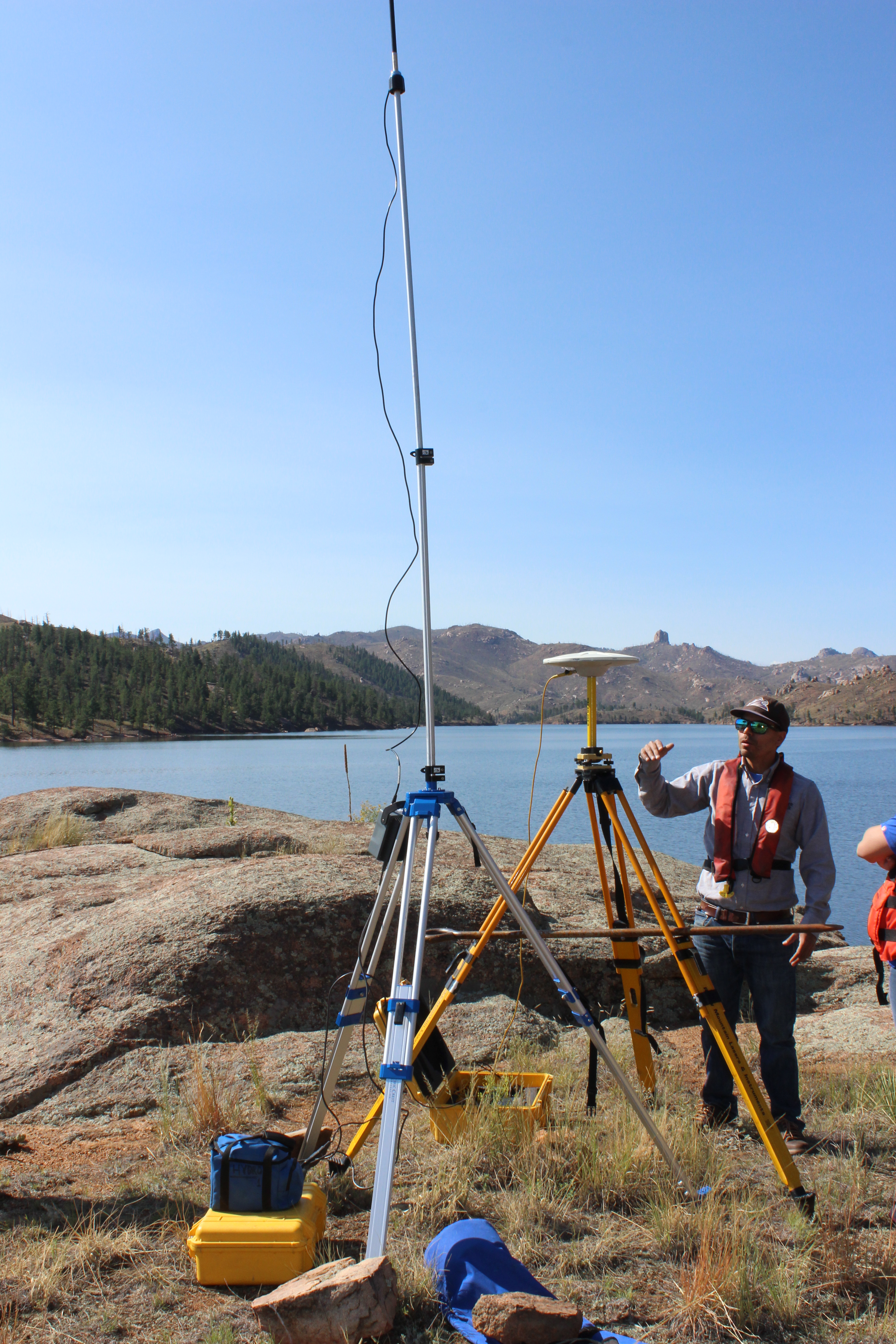
How much water can a reservoir really hold?
With a likeness to Captain Nemo and his Nautilus submarine, Angelo Martinez expertly steers his vessel — known as “Reservoir Dog” — through Cheesman Reservoir. But unlike Nemo, survey supervisor Martinez doesn’t need a submarine to see what’s at the bottom. Denver Water uses bathymetric surveying, sonar and GPS technology to map the contours of the reservoir floor.
Like Nautilus — depicted as ahead of its time in Jules Verne’s classic novel — Reservoir Dog houses some pretty sophisticated equipment. The department upgraded its survey instruments this year, allowing the team to more efficiently gather data with a more expansive sonar reach.
In a single day, surveyors can now gather up to 10 million data points — an increase of almost 9 million from previous technologies. This data must then be processed and analyzed. “It’s a lengthy process to work through all the data and ensure it’s accurate before bringing it into GIS software,” said Brad Geist, surveyor.
Once analyzed, the information can be used by a variety of Denver Water departments, including engineering and planning.
The last time Denver Water surveyed the bottom of Cheesman was in 2013. That bathymetric survey showed evidence of the lasting damage from the 1996 Buffalo Creek Fire and 2002 Hayman Fire, when fires charred the land, creating sediment that washes into the reservoir when it rains.
“With the fires damaging the reservoir’s watershed, a large amount of sediment gets washed into the reservoir, which decreases the storage capacity over time,” Geist said. “The data we gather this year can be compared to 2013 to see how this sediment impacts capacity, and in which areas of the reservoir it tends to accumulate.”
As environmental variables change over time, Denver Water planners want to know exactly how much water the reservoirs can hold. Bathymetric surveying is one way to help plan for future storage.
“I’m not sure of any other water utility in Colorado doing bathymetric surveying at this level,” Geist said.
While no sea monsters have been spotted thus far, the team has made some interesting finds at the bottom of the reservoirs, including roads in Dillon Reservoir and an old railroad grade in Eleven Mile Canyon Reservoir.
Take a ride with Martinez on Reservoir Dog.



